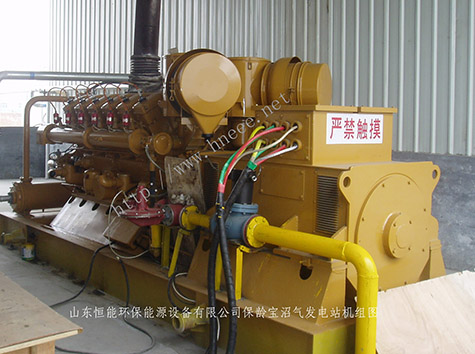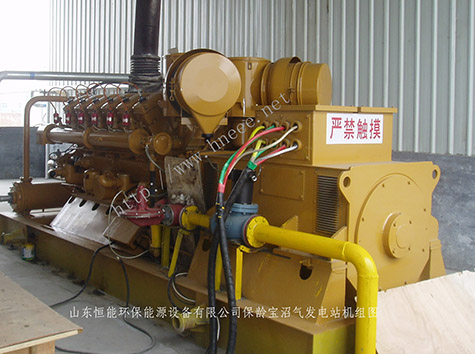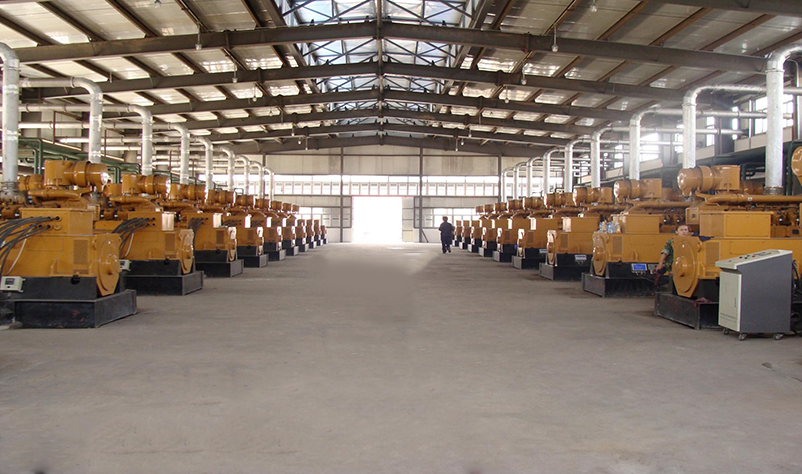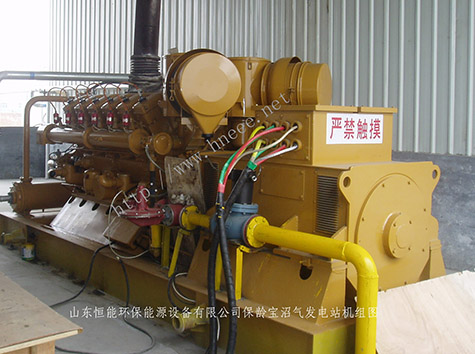沼氣發電機組發動機的五大系統介紹
沼氣發電技術是集環保和節能于一體的能源綜合利用新技術。它是利用工業、農業或城鎮生活中的大量有機廢棄物 例如酒糟液、禽畜糞、城市垃圾和污水等經厭氧發酵處理產生的沼氣驅動沼氣發電機組發電并可充分將發電機組的余熱用于沼氣生產使綜合熱效率達80%左右大大高于一般30%-40%的發電效率經濟效益顯著。
Biogas power generation technology is a new energy comprehensive utilization technology that integrates environmental protection and energy conservation. It utilizes a large amount of organic waste in industry, agriculture, or urban life, such as distiller's grains, livestock manure, urban garbage, and sewage, to generate biogas through anaerobic fermentation treatment. It drives the biogas generator set to generate electricity, and can fully use the waste heat of the generator set for biogas production, resulting in a comprehensive thermal efficiency of about 80%, which is significantly higher than the general 30% -40% power generation efficiency, and significant economic benefits.
單純將沼氣用于集中供氣和供熱覆蓋范圍有限可靠性也比較低而將沼氣作為發電燃料就地發電發電量隨沼氣產生量變化靈活調整可以使沼氣得到充分利用。
Simply using biogas for centralized gas supply and heating has limited coverage and relatively low reliability. However, using biogas as a power generation fuel for on-site power generation can flexibly adjust the electricity generation with changes in biogas production, allowing biogas to be fully utilized.
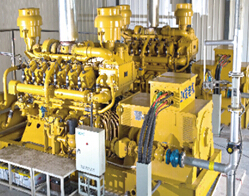

沼氣發電技術本身提供的是清潔能源不僅解決了沼氣工程中的環境問題、消耗了大量廢棄物、保護了環境、減少了溫室氣體的排放而且變廢為寶產生了大量的熱能和電能符合能源再循環利用的環保理念同時也帶來巨大的經濟效益。
The biogas power generation technology itself provides clean energy. It not only solves environmental problems in biogas engineering, consumes a large amount of waste, protects the environment, and reduces greenhouse gas emissions, but also turns waste into treasure, generating a large amount of heat and electricity. It conforms to the environmental protection concept of energy recycling and utilization, and also brings huge economic benefits.
沼氣發電是集環保和節能于一體的能源綜合利用新技術。它利用工業、農業或城鎮生活中的大量有機廢棄物 例如酒糟液、禽畜糞、城市垃圾和污水等經厭氧發酵處理產生的沼氣驅動沼氣發電機組發電并可充分利用發電機組的余熱用于沼氣生產使綜合熱效率達 80 左右大大高于一般 30~40% 的發電效率用戶的經濟效益顯
Biogas power generation is a new energy comprehensive utilization technology that integrates environmental protection and energy conservation. It utilizes a large amount of organic waste in industry, agriculture, or urban life, such as distiller's grains, livestock manure, urban garbage, and sewage, to generate biogas through anaerobic fermentation treatment. It drives the biogas generator set to generate electricity and fully utilizes the waste heat of the generator set for biogas production, resulting in a comprehensive thermal efficiency of around 80%, which is significantly higher than the general 30-40% power generation efficiency. The economic benefits of users are significant
 在線咨詢
在線咨詢 官方二維碼
官方二維碼




 當前位置:
當前位置: 2023.09.22
2023.09.22
